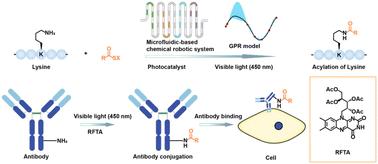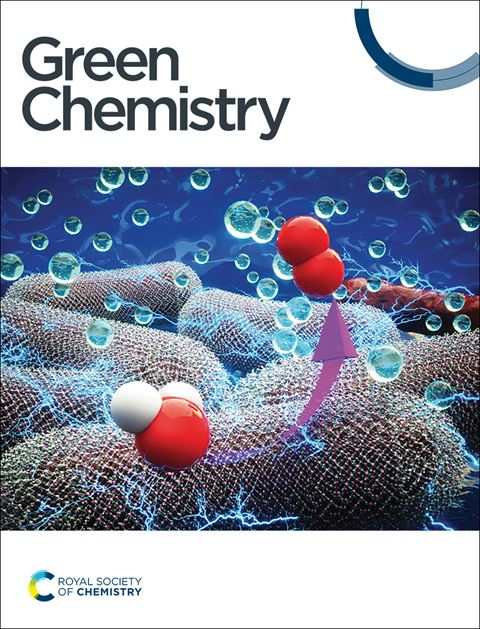利用微流体化学机器人系统筛选赖氨酸的光催化酰化反应†.
IF 9.2
1区 化学
Q1 CHEMISTRY, MULTIDISCIPLINARY
引用次数: 0
摘要
光氧化催化生物键合技术的应用扩大了各种生物键合技术的应用范围,建立了一种具有优异残留物选择性的新型生物分子框架。在此,我们报告了利用硫代酸和光激发核黄素四乙酸酯(RFTA)催化剂在可见光(450 纳米)下进行的简便酰化反应。我们利用基于微流体的高通量化学机器人系统和 GPR 模型获得了最佳反应条件。我们已成功修饰了一系列蛋白质和抗体,并利用功能手柄附着了多种生物分子,这证明了我们方法的多功能性和通用性。此外,这种光氧化催化反应还成功应用于多肽修饰、蛋白质标记和抗体连接。本文章由计算机程序翻译,如有差异,请以英文原文为准。

Photocatalytic acylation of lysine screened using a microfluidic-based chemical robotic system†
The application scope of various bioconjugation technologies has been expanded through the implementation of photoredox catalytic bioconjugation technology, establishing a novel biomolecular framework with exceptional residue selectivity. Herein, we report a facile acylation reaction utilizing a thioacid and a photoexcited riboflavin tetraacetate (RFTA) catalyst under visible light (450 nm). The optimal reaction conditions were obtained using a high-throughput microfluidic-based chemical robotic system and GPR model. We have successfully modified a range of proteins and antibodies and utilized the functional handle to attach diverse biological molecules, demonstrating the versatility and generality of our approach. In addition, this photoredox catalytic reaction was also successfully employed in peptide modification, protein labeling, and antibody conjugation.
求助全文
通过发布文献求助,成功后即可免费获取论文全文。
去求助
来源期刊

Green Chemistry
化学-化学综合
CiteScore
16.10
自引率
7.10%
发文量
677
审稿时长
1.4 months
期刊介绍:
Green Chemistry is a journal that provides a unique forum for the publication of innovative research on the development of alternative green and sustainable technologies. The scope of Green Chemistry is based on the definition proposed by Anastas and Warner (Green Chemistry: Theory and Practice, P T Anastas and J C Warner, Oxford University Press, Oxford, 1998), which defines green chemistry as the utilisation of a set of principles that reduces or eliminates the use or generation of hazardous substances in the design, manufacture and application of chemical products. Green Chemistry aims to reduce the environmental impact of the chemical enterprise by developing a technology base that is inherently non-toxic to living things and the environment. The journal welcomes submissions on all aspects of research relating to this endeavor and publishes original and significant cutting-edge research that is likely to be of wide general appeal. For a work to be published, it must present a significant advance in green chemistry, including a comparison with existing methods and a demonstration of advantages over those methods.
 求助内容:
求助内容: 应助结果提醒方式:
应助结果提醒方式:


